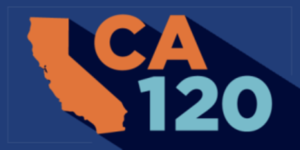Analysis
CA 120: Biden re-election decision looms large in CA primaries

If you’re one of the hundreds of candidates for the Legislature, Congress, or even the pending US Senate race, one data question is hovering over everything you’re planning for the 2024 primary election: what will turnout look like?
The presidential primary offers up an interesting conundrum for candidates. Presidential primary elections, more than any other, can see very different types of voters turning out depending on the composition of the race at the top of the ticket. These elections have a critical asymmetry in their ability to motivate different partisan voters to return a ballot or show up at the polls on Election Day.
 In the last presidential primary in 2020 there was no real contest on the Republican side and therefore Republicans had little incentive to vote. In contrast, Democrats and progressive-leaning independent voters had a crowded primary election with a field of candidates including Bernie Sanders, Joe Biden, Pete Buttigieg, Elizabeth Warren, and others.
In the last presidential primary in 2020 there was no real contest on the Republican side and therefore Republicans had little incentive to vote. In contrast, Democrats and progressive-leaning independent voters had a crowded primary election with a field of candidates including Bernie Sanders, Joe Biden, Pete Buttigieg, Elizabeth Warren, and others.
But in 2012, California voters saw the opposite. President Obama was the incumbent there was at least a nominal competitive Republican race between Mitt Romney and Ron Paul.
In recent presidential elections with competitive Democratic campaigns, Democratic turnout averaged 2.5-points better than Republican turnout. But back in 2012, with Obama as the incumbent, Republican turnout outpaced Democratic turnout by 8 points, and outpaced Independents by nearly 20-points. Among new-registrants, Republicans were 14 points higher turnout than Democrats in 2012.
Among young people the disparity is even greater. In 2020 and 2016 young Democrats were 16-points higher turnout than young Republicans, and in 2012 we saw the opposite, with young Republicans 3-points higher than young Democrats.
Add to this the fact that in California there are no signature-gathered ballot initiatives placed on the primary election ballot, reducing the possibility that a charged statewide ballot measure could spike turnout for voters who don’t have a major presidential primary to motivate them.
Given this issue of asymmetric primary turnout by party, prognostications for likely turnout models will have to wait until we have a better sense of the lineup for March 2024. If, as expected, Biden runs for re-election with little or no challenge, and there is a crowded Republican field, with California poised as the most important state of Super Tuesday, we could see a turnout that greatly favors Republicans. Turnout universes will have to reflect that. (Note: there is a bill in the Legislature which would push the primary election back to June, potentially meaning that it wouldn’t inspire turnout on either side of the aisle if both primaries are essentially over.)
In 2020 and 2016 young Democrats were 16-points higher turnout than young Republicans, and in 2012 we saw the opposite, with young Republicans 3-points higher than young Democrats.
If the election stays in March, and the Republican primary is a compelling election where California Republicans really believe their votes will matter, the partisan turnout differential would have a major impact on other contests on the ballot, from statewide contests down to local elections.
In the 2022 statewide contests, without the skew caused by presidential primaries, every constitutional office race ended up with a Democrat and a Republican on the ballot in the November General. There were no significant Democratic Primary challengers to incumbents in any of the statewide contests — except for Insurance Commissioner — and even in this contest with a strong Democratic challenger, a virtually unknown Republican made the November General. This should be the baseline for analysis.
However, over the last two statewide contests for U.S. Senate, we have seen intra-party Democratic runoffs: Kamala Harris v. Loretta Sanchez in 2016 and Kevin de Leon v. Dianne Feinstein in 2018. Maybe Senate contests are the outlier.
With Feinstein announcing she will not seek another term in the Senate, there will be an open race in 2022 with Representatives Katie Porter, Adam Schiff, and Barbara Lee already announcing their runs. If Duane “The Rock” Johnson runs as an independent, or if a significant, well-funded Republican gets on the ballot, the asymmetric turnout – with higher engagement from Republicans coming out to vote for the President – could lead to an independent or Republican being lifted to the second spot on the ballot. In fact, with a split Democratic field, we could see a non-Democrat gain the top spot. (Don’t get me started on two non-Democrats getting the top two spots – that’s not going to happen!)
For the U.S. Senate contest, the turnout differential could determine if one of the Democrats can effectively win the race in the primary by being the only Democrat to go to November, or if they will have to win in the General in an intra-party Democratic runoff. Spending decisions, positioning on issues, and reaching out to non-Democratic voters are all strategic decisions that come into play.
And it’s not just the U.S. Senate race that will have to make these strategic decisions. Many local elections, including some city council and most County Supervisor elections, are “decided” in the primary, with candidates getting over 50% and avoiding a runoff in November. How and in what races this will happen could be determined by turnout asymmetries caused by the Presidential contest. This may not have been a reality when many of these races were held in off-year elections, without anything else on the ballot. But now that almost all municipal elections are concurrent with the statewide/federal contests in even-numbered years, local officials and candidates need to consider this as they plan out their election strategies. We could see districts that only have 25% Republican registration having turnout where Republicans are 40% of the ballots cast, which could change the outcomes in many races, particularly top-two contests.
As the field for the Presidential election solidifies, expect likely voter universes for 2024 to begin to gel, and we can start to project turnout. Until then, we can only wait and watch.
Editor’s Note: Paul Mitchell, a regular contributor to Capitol Weekly, is the creator of the CA120 column, vice president of Political Data and owner of Redistricting Partners, a political strategy firm.
Want to see more stories like this? Sign up for The Roundup, the free daily newsletter about California politics from the editors of Capitol Weekly. Stay up to date on the news you need to know.
Sign up below, then look for a confirmation email in your inbox.

Leave a Reply